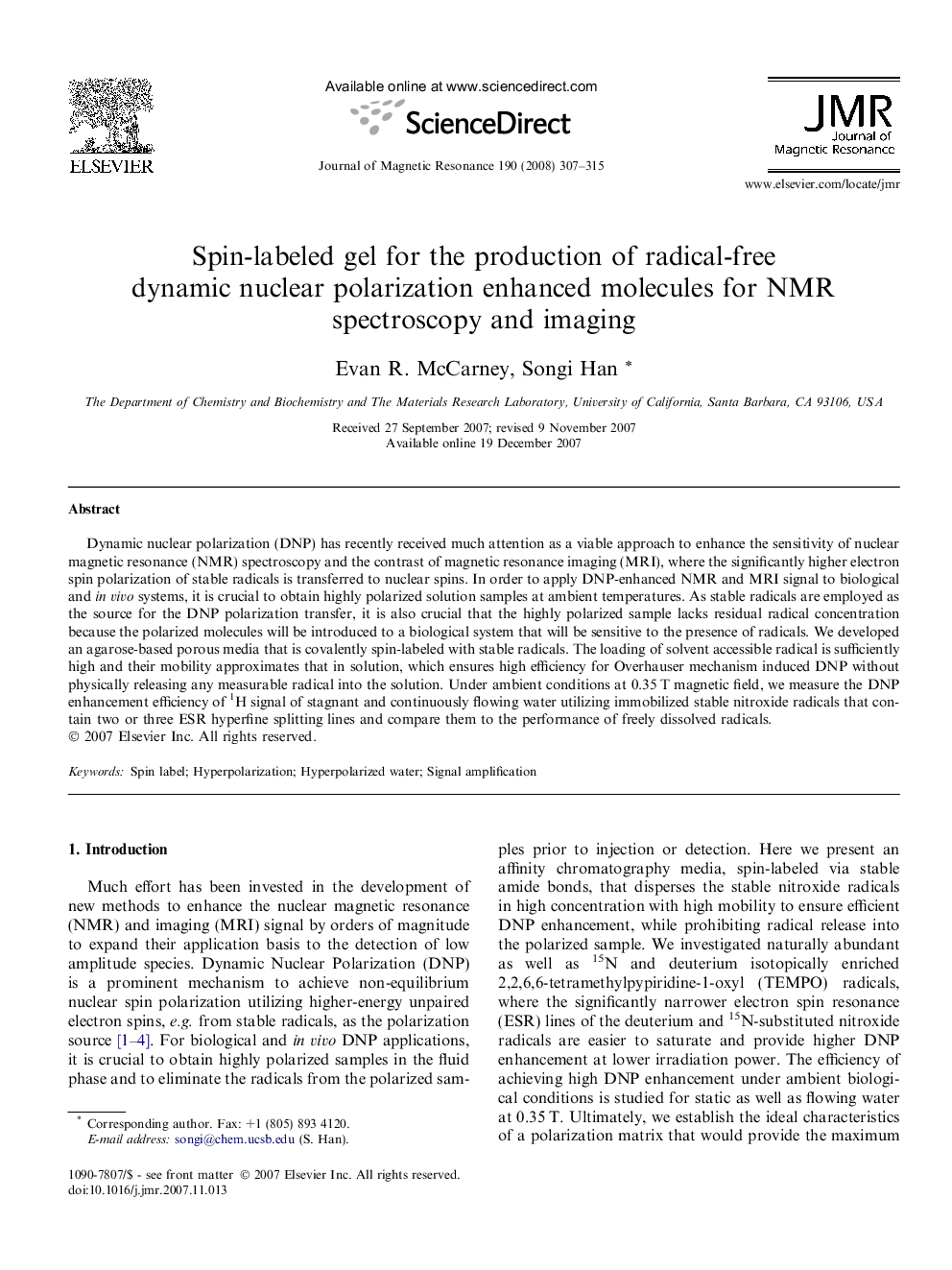| Article ID | Journal | Published Year | Pages | File Type |
|---|---|---|---|---|
| 5407261 | Journal of Magnetic Resonance | 2008 | 9 Pages |
Abstract
Dynamic nuclear polarization (DNP) has recently received much attention as a viable approach to enhance the sensitivity of nuclear magnetic resonance (NMR) spectroscopy and the contrast of magnetic resonance imaging (MRI), where the significantly higher electron spin polarization of stable radicals is transferred to nuclear spins. In order to apply DNP-enhanced NMR and MRI signal to biological and in vivo systems, it is crucial to obtain highly polarized solution samples at ambient temperatures. As stable radicals are employed as the source for the DNP polarization transfer, it is also crucial that the highly polarized sample lacks residual radical concentration because the polarized molecules will be introduced to a biological system that will be sensitive to the presence of radicals. We developed an agarose-based porous media that is covalently spin-labeled with stable radicals. The loading of solvent accessible radical is sufficiently high and their mobility approximates that in solution, which ensures high efficiency for Overhauser mechanism induced DNP without physically releasing any measurable radical into the solution. Under ambient conditions at 0.35Â T magnetic field, we measure the DNP enhancement efficiency of 1H signal of stagnant and continuously flowing water utilizing immobilized stable nitroxide radicals that contain two or three ESR hyperfine splitting lines and compare them to the performance of freely dissolved radicals.
Related Topics
Physical Sciences and Engineering
Chemistry
Physical and Theoretical Chemistry
Authors
Evan R. McCarney, Songi Han,
